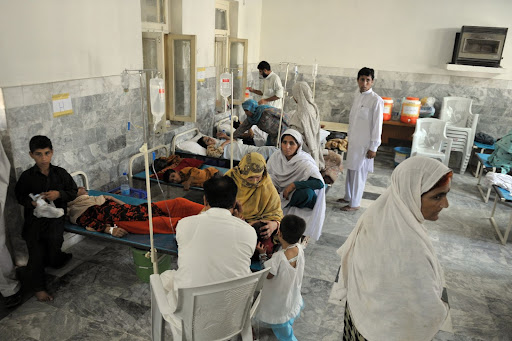Disease Surveillance in Silos

What is Disease Surveillance?
Disease Surveillance is often referred to as the continuous and systematic collection and analysis of data. Notifying the concerned to take timely action is the essence of any surveillance regime that requires the implementation of a swift mechanism. The interpretation forms the basis for planning, implementation, and evaluation of public health practice. Surveillance can either be active or passive wherein active surveillance is often accurate this is typically expensive. Passive surveillance focuses on collating data from all potential healthcare workers without incentivizing or reminding them.
Where does Pakistan stand?
Pakistan, with a population of approximately 225 million, spent just over 1% of its GDP in 2020-21 on the health sector. This health spending is ranked way below the advised spending of 5% by the World Health Organisation (WHO).
Pakistan, with a population of approximately 225 million, spent just over 1% of its GDP in 2020-21 on the health sector.
Additionally, the current shortage of doctors and healthcare facilities along with the inefficiencies of the system presents a massive gap in the healthcare system.
This gap demands the authorities to either revamp the entire healthcare network or apply modern-day techniques to maximize output from the existing resources.
Pakistan’s health system – a case study
With ‘Health’ being devolved to provinces because of the 18th amendment in the constitution, provincial departments have set up vertical programs focussing on diseases with higher incidence such as hepatitis, tuberculosis, malaria, aids, polio, and many others.

These programs in a loosely coupled structure coordinate with the national program(s) in a way deemed fit to provincial authorities based on bureaucratic willingness and political coherence.
All these programs run IT-based systems – referred to as Management Information Systems (MIS) in some primitive or advanced form. These systems rarely talk to each other. As a result, the data duplication in these systems hinders the consolidation of datasets in a single document, which could be used to take action and devise policy.
The interpretation of data is completely dependent upon the dataset and the source it has been picked from.
The notified focal person in the government sector; a tertiary healthcare hospital, is expected to enter potential hepatitis cases in multiple systems. There is no mechanism in place to identify the uniqueness of the patient and assign revisits to the same index.
Systems such as District Health Information Systems (DHIS-I and DHIS-II) at the national and provincial levels often report a picture independent of what provincial systems represent. Thus, the interpretation of data is completely dependent upon the dataset and the source it has been picked from. This enforces decision-makers to rely on the experience of domain experts apart from what data tends to suggest otherwise.
A typical case of Non-Communicable Disease (NCD) is reported in multiple systems from the same health facility. Unique identification of the case is limited to high-priority diseases at best.
Studies reveal that the incidence of TB is much higher in patients with HIV, whereas the programs still believe that holding the data up close is the key. In the healthcare sector where patient data confidentiality is crucial, sharing anonymized data with relevant programs could be one of the options to spearhead demographic-based case responses.
Despite all the loopholes, there’s still hope. The efficient use of data to make surveillance decisions is not unprecedented in Pakistan. The ‘Dengue Program’, introduced in 2012, takes tactical as well as strategic decisions based on data that the system churns out. Similarly, the Polio Program at National Emergency and Operations Centre (NEOC) has now graduated to the use of integrated dashboards.
Policy decisions pertaining to the allocation of funds for the Polio Program, availability of vaccines, and advice on the appointment of vaccinators and mobilizers are provided using the dataset accessible via a centralized dashboard.
Why silos?
Even with dozens of studies and conferences around the subject, Pakistan still battles the reality that a special campaign for measles is only planned when it has affected the entire tehsil as the passive surveillance did not raise the alarm or the absence of a centralized system failed to analyze data against thresholds, which are hardly defined.
With all the hype around digital health in developing countries, systems developed in silos are effective to serve short-term objectives only. A centralized policy to hook up (minimal) datasets from the systems operating in silos to the larger national and provincial levels surveillance system is inevitable.






